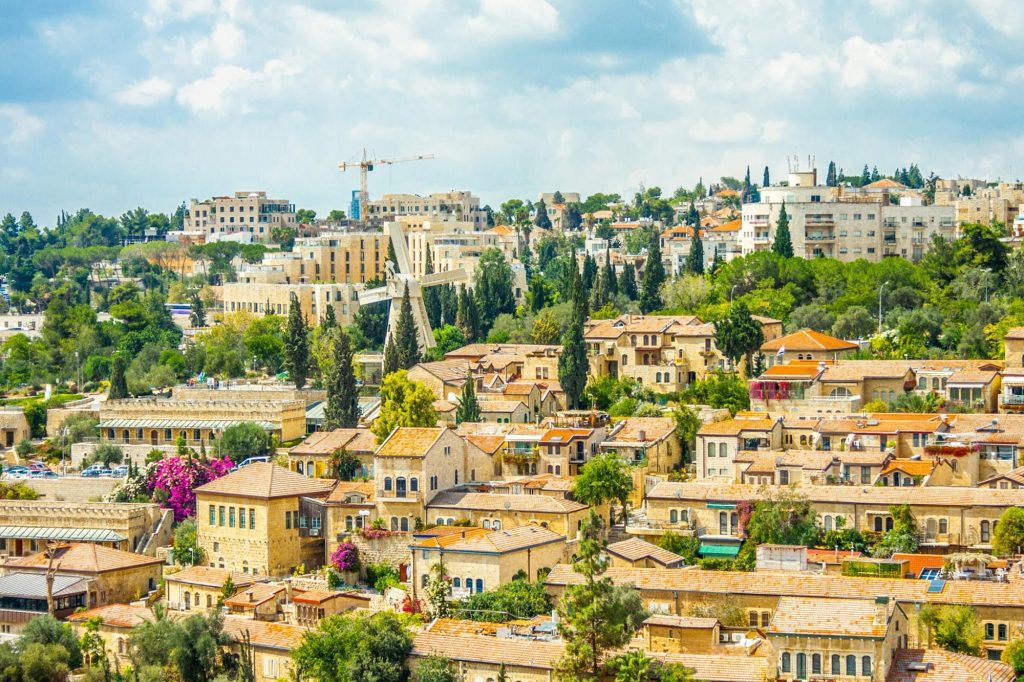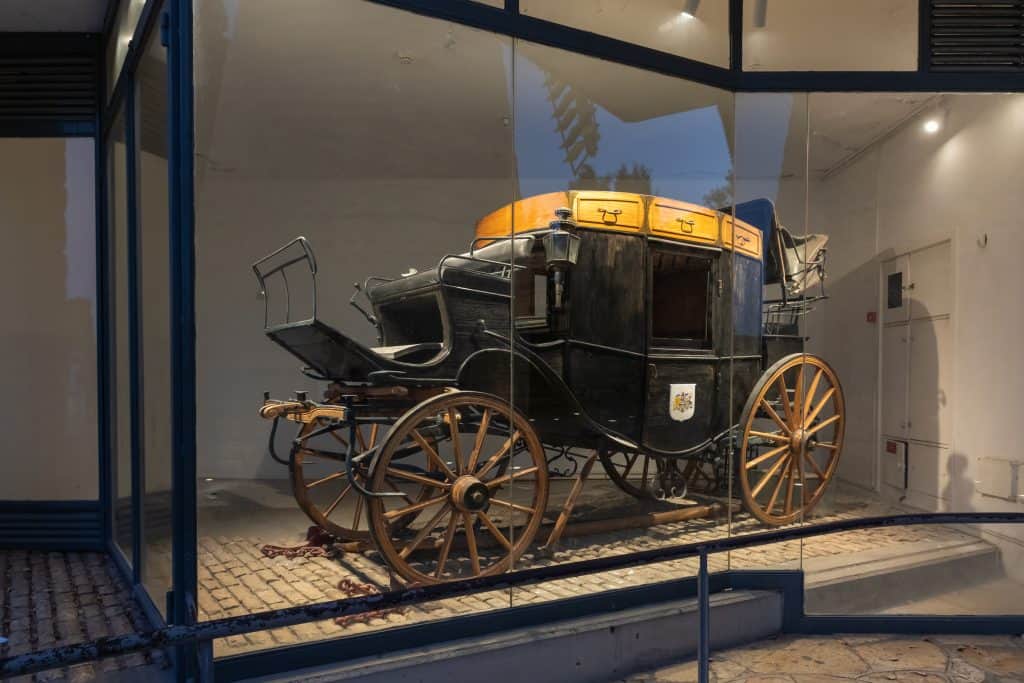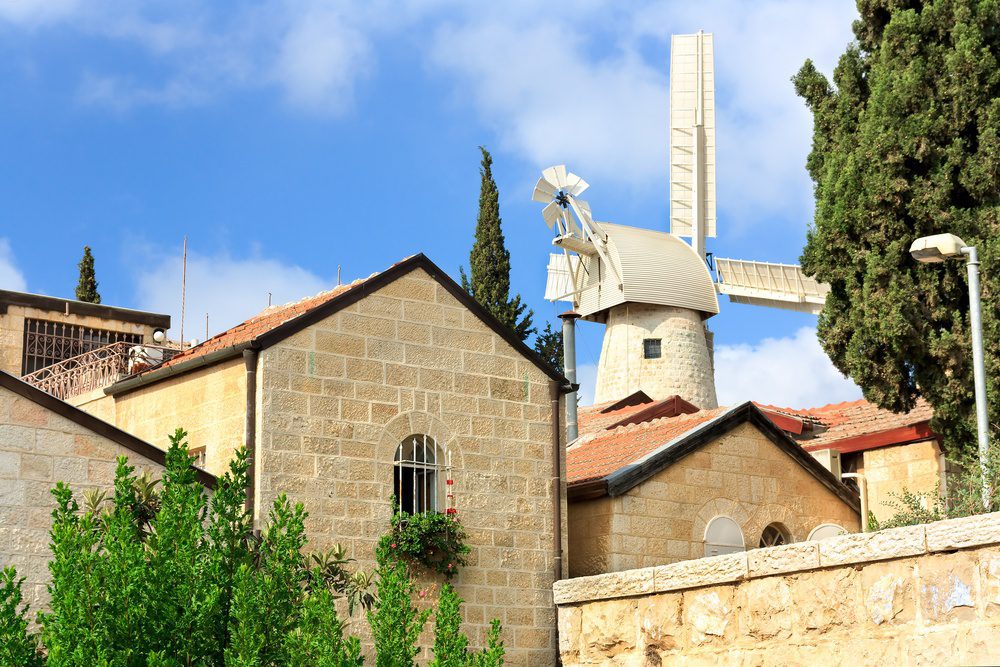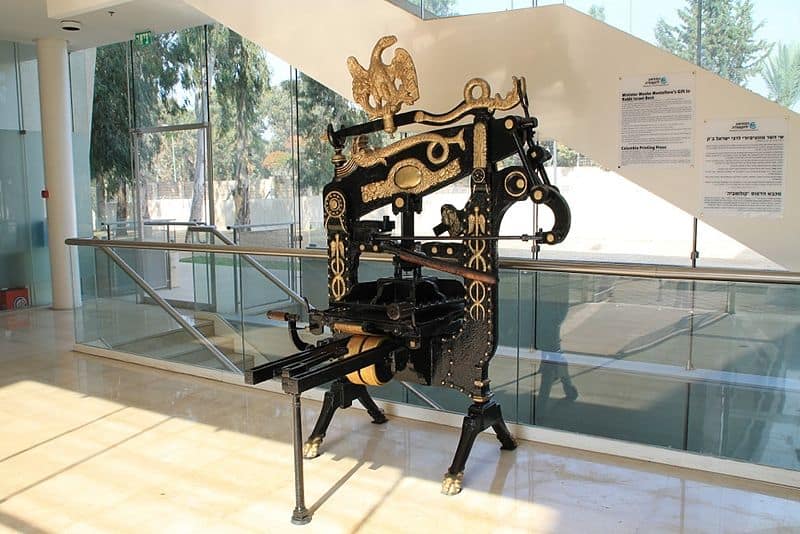Sir Moses Haim Montefiore (1784 –1885) was a British financier, banker, activist, and philanthropist. Born to a poor Italian-Jewish family, he married into the rich Rothschild family. He donated large sums of money to promote industry; business; economic development; education, and health among the Jewish community in the Levant; including the founding of Mishkenot Sha’ananim and Yemin Moshe in 1860; the first settlement of the New Yishuv. As President of the Board of Deputies of British Jews, his correspondence with the British consul in Damascus, Charles Henry Churchill, in 1841–42 is seen as pivotal to the development of Proto-Zionism.

Moses Montefiore: His Journeys to the Holy Land
Moses Montefiore though somewhat lax in religious observance in his early life after he visited the Holy Land in 1827, became a strictly observant Jew. He was in the habit of traveling with a personal shochet (ritual slaughterer) to ensure that he would have a ready supply of kosher meat. Although Montefiore spent only a few days in Jerusalem, the 1827 visit changed his life. He resolved to increase his religious observance and to attend synagogue on Shabbat, as well as Mondays and Thursdays when the Torah is read. The visit had been a “spiritual transforming event” for him.

Montefiore has visited Israel seven times. In the 19th century, these tours were fraught with difficulties and dangers, both due to the security conditions and the condition of the roads. During this period, diseases and poverty prevailed in the Land of Israel, and Montefiore’s visit contributed significantly to the communities in the four holy cities: Jerusalem, Safed, Tiberias, and Hebron.

Moses Montefiore First Visit to Palestine
In October 1827, he traveled for the first time to Israel on a British warship that brought him to Alexandria. In Egypt, he was told about the security situation in the country, a time when there were revolts against the government. In addition, he fell ill and suffered from climate change. Still happy to “get out of Egypt” and arrive in Jaffa. In Jerusalem, he found “50 Sephardic families, 40 Ashkenazis and 200 old widows – in poverty and destitution.” He and his wife donated to the city’s residents and institutions. On the way back, Ottoman warships accidentally attacked his ship, stopping the attack only when the ship arrived in Alexandria.
Moses Montefiore SecondVisit to Palestine
In May 1839, he came to Israel with an idea of her condition. This time he paid attention to improving the situation of the Jews. He heard from them that “farming is the only solution to their situation.” He arrived in Israel through the port of Beirut, passed through Safed and Tiberias, and gave each resident a financial grant. He ascended Mount Meron accompanied by the Jews of Safed. He visited Hebron; In Jerusalem, he was forced to camp on the Mount of Olives due to the plagues that broke out in the city.

Credit: Pikiwiki Israel, CC BY 2.5, via Wikimedia Commons, HIT
Accompanied by his secretary, Dr. Eliezer Halevi, he recited Psalms at the Tomb of David. He also began to initiate the establishment of workshops and agricultural factories. He sought help for his enterprise from the Jews of the world but without success. On this journey, his wife began to write her travel diary. In addition, he added a part to the structure of Rachel’s tomb that still exists today.
In 1857 he discovered that the attempts at agricultural settlement had failed and decided to build the Mishkenot Sha’ananim neighborhood (the neighborhood was established three years later). That same year, he built a flour mill on the land he bought for the hospital; to entice the Jews in Jerusalem to move to the new neighborhood.
Conclusions
So in all his travels, he assisted in developing the Jewish community in the Land of Israel and easing the living conditions of the Jews in it. Among other things, thanks to his respect for the Ottoman authorities and the foreign consuls in the country thanks to his status in Britain. Montefiore promoted Jewish settlement outside the walls of Jerusalem. Assisted in the livelihood of the city’s residents and encouraged productive work and tillage. He also worked to improve medical services in Jerusalem. The flour mill he set up is especially well-known and stands to this day in the Mishkenot Sha’ananim neighborhood (there, you can see Montefiore’s chariot that he used while touring the Holy Land).







